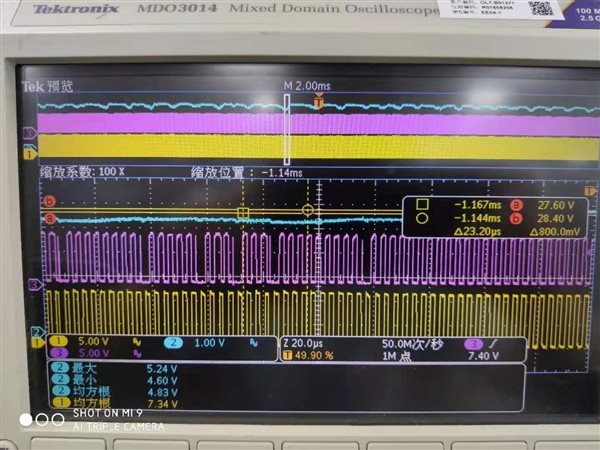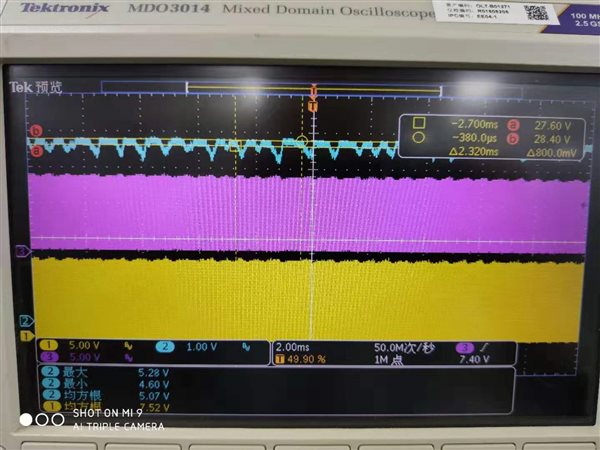Hi:
I am using TPS546C20A to design a two phase stackable synchronous buck converter.the input is 12V,output is 5V/70A.
when I increase output current up to 45A,the slave SW voltage will decrease pulse width periodically,but master SW voltage is OK.and more current will shutdown the converter.+5V output voltage can't stay stability;
CH1:master SW CH2:+5V Ch3:slave SW



